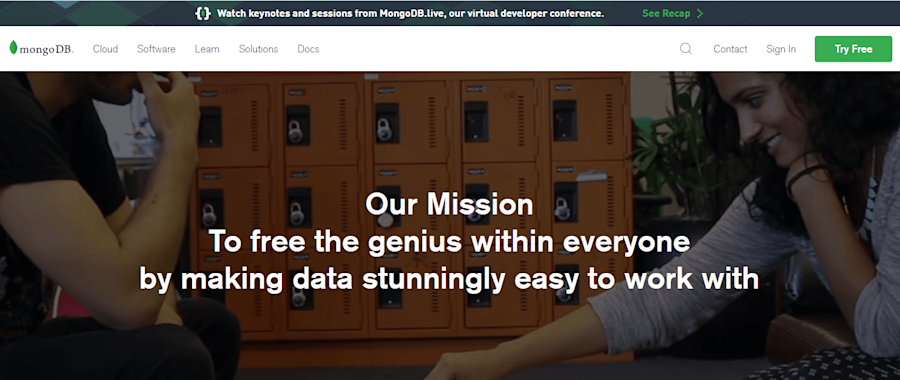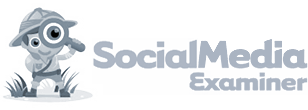So, you want to host a webinar.
Or you've already hosted a webinar but….it tanked.
Maybe no one showed up and you wasted your time.
Or, the sound dropped — leaving you embarrassed and attendees annoyed.
Before you throw in the towel on webinars, maybe it's time to learn a few strategies from the experts.
Lucky for you, we recently hosted a webinar about….well, webinars.
I know; how meta. Watch the video below if you prefer a show vs. a read.
Here's a rundown of Leadfeeder's recent webinar with Gilles Bertaux, co-founder and CEO of Livestorm.co.
Gilles and his team at Livestorm.co have streamed more than half a million minutes of webinars and hosted over 50 hours of webinars in 2018 alone.
That's a ton of time in front of the camera!
Before we dig into Gilles's best tips for using B2B webinars to drive your business forward, let's talk about why webinars matter.
Why are webinars such a powerful B2B marketing tool?
Why should you even bother with webinars?
For starters, they work.
In 2017, 66% of marketers said that webinars were one of the most effective tactics for B2B marketing.
And they work for every aspect of B2B marketing, including lead generation, sales, conversion, even customer success.
But the main key, Gilles says, is that webinars are scalable.
You can only host so many different 1 on 1 sales calls or meetings. But with a webinar, you can teach people about a specific topic to hundreds, if not thousands of people all at once.
Webinars can be used for a ton of different topics and conversations, including:
Demo webinars (sales)
Training webinars (customer service, lead generation)
Content marketing
Inner communication (HR, etc.)
Webinars also help build personal connections. For example, you can say, "Hey, James, thank you for joining." You can do a Q&A session at the end and answer direct questions.
Being able to scale training while maintaining that personal touch is one of the main reasons why webinars are so effective.
So how do you make sure all that work doesn't go to waste? Here are a few of the top tips Gilles shared with us.
Note: Wondering how you could use webinar registration to reach more prospects? Sign up and try Leadfeeder free for 14 days to uncover companies and turn them into high-quality leads.
5 strategies for creating a successful B2B webinar
Unlike meetings, where everyone is all in one room, webinars require a bit more strategy to be effective.
While you still need to make sure you are communicating clearly (just like in a meeting). there are a few more steps B2B businesses should take to create a more successful webinar.
Host webinars on Tuesday afternoons
When should you host your webinar? According to Gilles, Tuesday afternoons are the best days to host a webinar. It makes sense — on Mondays everyone is getting settled in for the week, making sure they know who they need to contact and what meetings they can't miss.
By Fridays everyone is checking out — they might even take a long weekend.
The second-best times are Thursdays noon and late afternoon, depending on your audience.
According to BloggingX, the best time to run a webinar is 11 a.m.

It's pretty logical, again, because in the morning people aren't that focused, at noon people tend to leave for lunch, and then you have that afternoon slump.
But also keep in mind that your audience might be different. Pay attention to what times tend to get the most actual attendees.
Use standing or on-demand webinars for technical information
When you think of webinars, most folks think of having to be there, actually hosting the webinar.
It's a lot of work to create, host, and follow up with webinars — which also limits your ability to scale webinars.
Having on-going webinars, even if it's on-demand, allows you to cover the more technical topics that you talk about over and over again.
So for Leadfeeder, that might be where to put my tracking tag for Leadfeeder? How do I set up my Google Analytics connection? That stuff is basic in the setup, but essential to get right.
Creating a standing webinar time for those topics — or even a recorded webinar — allows you to reach thousands of people all at once.
MongoDB, for example, is a NoSQL database program, so it's pretty technical stuff, but they host webinars as open offices.
It's pretty cool. Every Monday or each Tuesday at 5 PM they have, essentially, an open mic.

They are waiting in the room, people join up, and then just do live Q&A. There is no specific content prepared ahead, they do an improvised demo, on the fly. It's an interesting way to scale support.
Focus on sound quality
You might think that video is the most important thing when it comes to webinars — but actually, Gilles says that audio is more important.
If you go to YouTube and have a poor connection, you might not notice the video quality, but you cannot watch a video with crappy sound — super annoying.
While hosting, make sure that you wear headphones to reduce echo as much as possible. Close all those apps — Skype, GChat, Slack. Turn that Google Chrome or Dropbox synchronization off.
Those programs eat up a lot of bandwidth.
When you are done screen sharing, turn it off. This is super important, as it eats a lot of CPU.
Make sure your computer can focus all its bandwidth on delivering high-quality sound, and sacrifice video over sound if you need to.
Create a schedule ahead of time
We already covered a lot of different ways you can use webinars — to drive leads, to educate, even to provide customer service.
That might mean you have two or even three webinars in a week. Gilles recommends you don't squeeze too many webinars in one week.
For example, they host weekly 101 webinars, but then on Thursdays or Wednesdays, they host a more advanced webinar.
But it's all planned out in advance, so they aren't flying by the seat of their pants. They know at least two or three weeks ahead of time what that week's webinars will be.
The benefits of this are twofold — it gives your audience more time to sign up and gives you more time to promote the webinar.
Speaking of promoting your webinar…
Promote your webinar
Don't stick to one path of promotion. An email blast is a good place to start, but you'll also want to use social media, like LinkedIn, Facebook, Twitter, or wherever else your audience is active.
After your first email blast, do a follow-up a few days before. This will often give you a huge bump in registration because people don't necessarily know two weeks in advance whether they can join or not.
As you get new clients, add them on LinkedIn and other platforms so you can let them know about upcoming webinars.
But don't just stick to blasting your webinar all over the place.
Livestorm.io was able to successfully promote its webinars by focusing on smaller communities. Rather than dragging their whole entire Twitter feed in, they focused on groups where folks talked about growth hacking or SaaS or inbound marketing.
In those groups, their message really resonated. They'd get involved with the community and from time to time, dropped a, "Hey! You know what? We are hosting this webinar," and people started to register.
Blasting on Twitter sometimes doesn't get as much result as you would expect; instead narrow it down to smaller communities like Slack groups, Facebook groups, even LinkedIn groups to get traction.
Final Thoughts on Building B2B Webinars that Work
Webinars are a versatile sales, marketing, and lead generation tool. They are particularly useful for professional audiences looking to gain knowledge about industry trends and solutions. The tips above are just the first step to building a successful B2B webinar — make sure to track statistics so you know what strategies resonate with your audience.
Want more info about creating a successful B2B webinar? Watch the whole webinar here, including a Q&A session with the audience.
Note: Wondering how you could use webinar registration to reach more prospects? Sign up and try Leadfeeder free for 14 days to uncover high-quality leads.
More leads, no forms.
Sounds too good to be true? It’s not. Identify companies already visiting your website and turn them into qualified leads to fuel your sales pipeline.
Show me how







